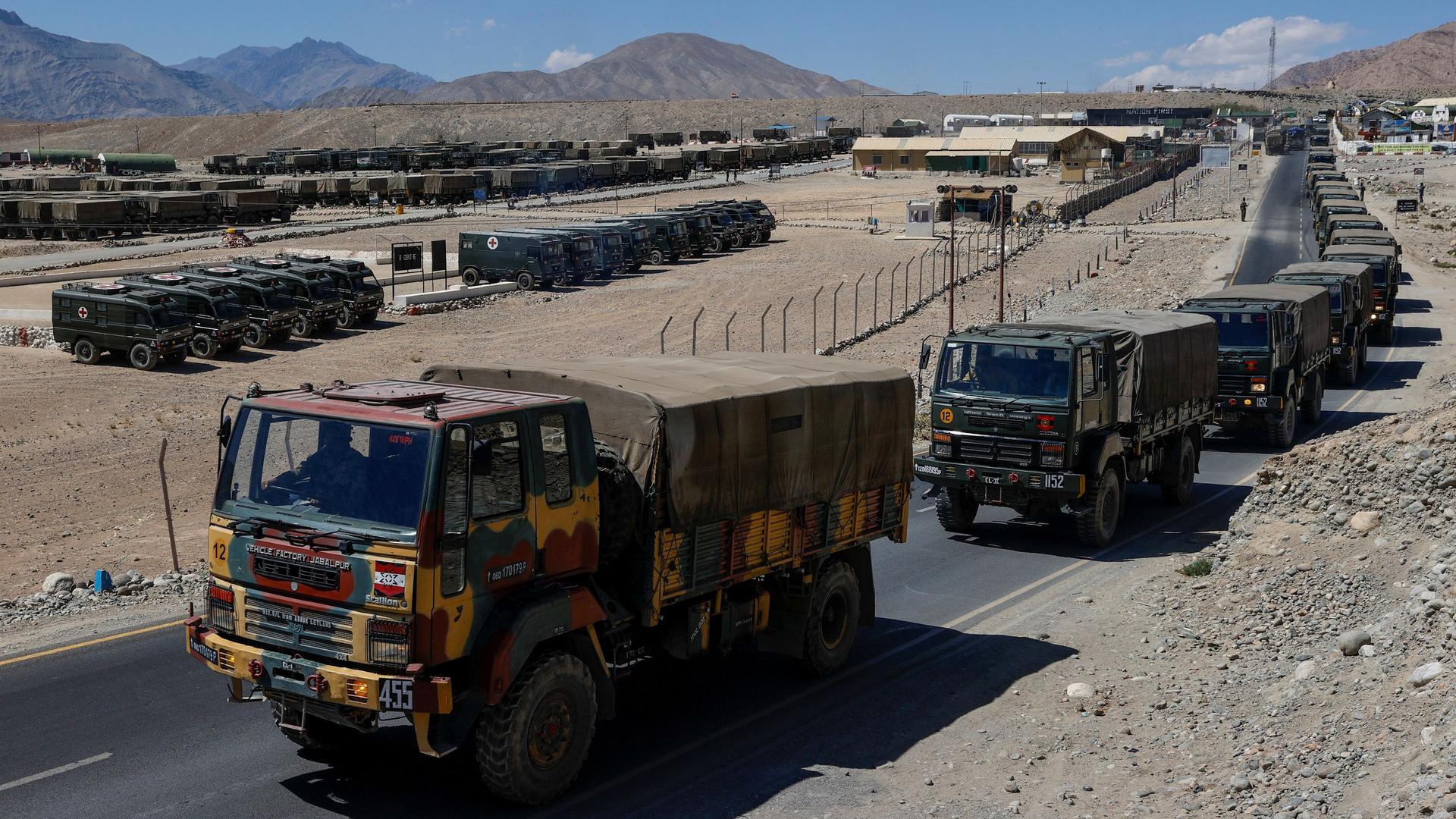India has asked China to pull back its troops and armaments from the disputed border region of Ladakh, and accused Beijing of trying to alter the status quo in the region through aggressive actions.
Defence Minister Rajnath Singh told the upper house of Parliament on Thursday that China has amassed troops and weapons in the Ladakh region of India-administered Kashmir in violation of agreements reached in the 1990s and is trying to alter the status quo there.
He said that was not acceptable and that India is seeking a peaceful resolution through talks.
The two countries’ foreign ministers met in Moscow a week ago and agreed to deescalate tensions in Ladakh, but Singh’s words to Parliament suggested they have not significantly declined and that settling the impasse will be a long process.
“The status quo is one-sided and also it has been clarified that these efforts are not acceptable to us under any conditions,” Singh said.
He also said India has counter-deployed troops that have foiled “transgression attempts by China”.
“We should be confident that our armed forces will handle the situation successfully,” Singh said, adding it was “apparent from Chinese activities that their words don’t match their actions”.
READ MORE: China, India play blame game over shooting at tense border
Cant figure this! Govt again tells Parliament there is no Chinese intrusion across LAC since April. Then what is this crises about. Why did Foreign Secretary describe India-China situation as most serious & unprecedented since 1962 if there is no intrusion?
— M K Venu (@mkvenu1) September 17, 2020
China wants Indian troops to disengage
In Beijing, Chinese Foreign Ministry spokesperson Wang Wenbin again laid the onus on India to relieve the tensions and said Chinese border troops have “always strictly abided by the (agreements) between the two countries and are committed to safeguarding China’s territorial sovereignty and maintaining peace and tranquillity in the border areas”.
“What is pressing now is that the Indian side should immediately correct its mistake, disengage on the ground as soon as possible, and take concrete actions to ease the tension and lower the temperature along the border,” Wang said at a daily briefing.
Relations between the two countries have often been strained, partly due to their undemarcated border.
They fought a border war in 1962 that spilled into Ladakh and ended in an uneasy truce. Since then, troops have guarded the undefined border area, occasionally brawling. The standoff escalated to a deadly clash on a high ridge on June 15 that left 20 Indian soldiers dead.
Singh said India inflicted “heavy” casualties on Chinese forces, but did not provide any numbers. China has not given any details on its casualties.
After that clash, the two countries partially disengaged from the site in the Galwan Valley and at least two other places, but the crisis has continued in at least three other areas, including glacial Pangong Lake.
READ MORE: 73 years on, violence is reimagined in Modi’s India
No force in the world can stop Indian Armed Forces from patrolling our borders. Our brave soldiers sacrificed their lives to ensure that no change in the patrolling pattern is allowed.
– Defence Minister Shri @rajnathsingh during his statement on border tensions along Ladakh. pic.twitter.com/HJf53HeLS9
— BJP (@BJP4India) September 17, 2020
Peaceful resolutions
“We are committed to a peaceful resolution. It’s in our hands to start the war but to end it is not in our hands. I am surprised that from the land (from where) the peace message went out to the world, there is an effort to create disharmony in that land,” Singh said.
He said the impasse was due to differing perceptions of the fiercely contested Line of Actual Control (LAC) that separates Chinese and Indian-held territories from Ladakh in the west to India’s eastern state of Arunachal Pradesh.
Singh said India has doubled its budget on building roads, bridges, and other infrastructure along the border to match the Chinese infrastructure to accelerate the mobility of forces.
“We are fully prepared to protect the sovereignty and territorial integrity of our country,” he said, adding that China continued to occupy nearly 38,000 square kilometers of Indian land in Ladakh.
Despite the martyrdom of 20 Indian soldiers, PM Modi has given a clean chit to China.
Why has PM Modi become a talking parrot for China in India? Is the Rs.9202 crore loan bearing too heavy on his 56″ inch chest?#BikGayiModiSarkar pic.twitter.com/hTjFeKpt7U
— Congress (@INCIndia) September 16, 2020
Wavering approach
India has so far offered no clear picture of the Chinese presence in the region.
On Wednesday, the government told the parliament that no infiltration was reported in the contested region for the last six months.
Opposition Congress immediately reacted saying it was an insult to the Indian soldiers who were killed in Galwan valley in June.
“Is the government trying to say that the Galwan clash happened in the Chinese territory? By saying so, is the government blaming the Indian army of trespassing into the enemy territory,” Congress spokesperson Pawan Khera said.
Current tensions
India is jockeying for strategic parity with China, massively ramping up its military infrastructure along the LAC.
China for its part has been building roads and defensive positions in the disputed Doklam region and in recent weeks has conducted high-altitude parachute drops and stationed strategic bombers in Tibet.
Adding to the tension, India unilaterally declared Ladakh a federal territory and separated it from disputed Kashmir in August 2019, ending its semi-autonomous status.
Shortly after, lawmakers in India’s ruling party began advocating taking control of some China-held areas, alarming Beijing.










Discussion about this post